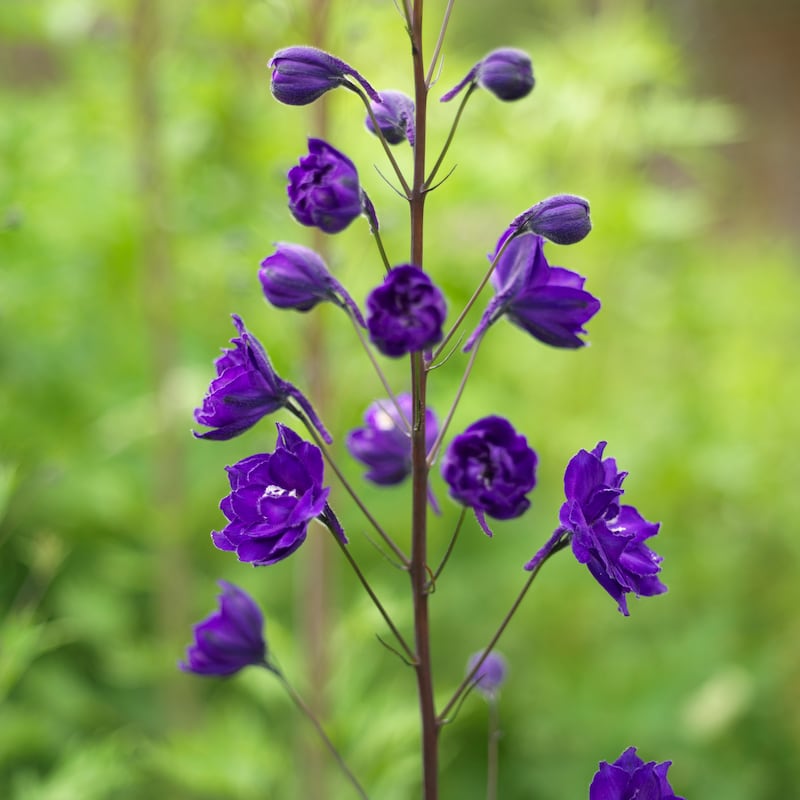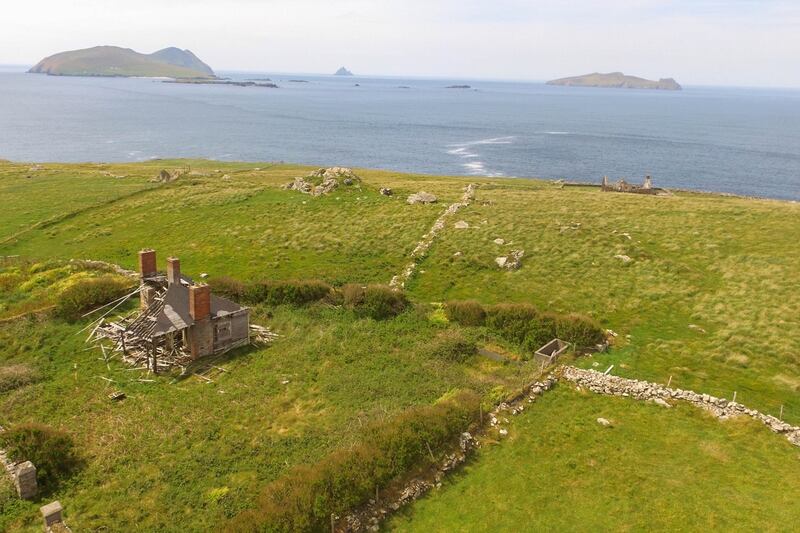Like many gardeners, I fell in love with delphiniums long before I knew their name. Few flowers are more instantly evocative of the lush yet fleeting beauty of the mid-summer garden in full flush. They are the stately blue, purple, white, mauve and lilac spires that we see in children's picture books. The lofty blooms in traditional herbaceous borders inspired by the Edwardian garden designer Gertrude Jekyll, where they grow next to peonies, roses, lupins, lavender, campanulas and oriental poppies.
It's the special luminosity of their peacock-blue blooms that Vincent Van Gogh was drawn to capture in his floral still lives. The celebrated photographer, artist and curator Edward Steichen was so besotted by their beauty that he not only photographed them with a passion verging on obsession but became such an expert on their cultivation and breeding that he was eventually appointed president of the Delphinium Society of America.
Indeed, such was Steichen’s enduring love for this summer blooming herbaceous perennial that its flowers were the subject of his first exhibition, Edward Steichen’s Delphiniums, at New York’s Museum of Modern Art in 1936, the only floral exhibition ever to be held there.
Steichen is one of the many noted plantspeople that the delphinium has held in its thrall; others include the famous nurserymen and plant breeders Victor Lemoine, James Kelway, Karl Foerster, Frank Bishop, John Blackmore, Charles Langdon, Frank Reinelt, the Vetterle bothers, Charles Barber, Bonne Ruys and Watkin Samuel.

As a result the genetic history of the modern delphiniums in our gardens is notoriously complicated, almost all of them being complex hybrids that are the result of multiple crosses between different species.
Confusing matters even further is the fact that although Irish gardeners traditionally think of delphiniums as hardy herbaceous perennials, these members of the ranunculaceae family are closely related to the hardy annual commonly known as larkspur (Consolida ajacis, previously classified as Delphinium ajacis) which is also prized for its lofty flower spikes in shades of blue, white, purple and mauve.
My first hands-on experience of growing delphiniums was as a fledgling gardener. It was not a success. Planted into a heavy, wet, clay-marl soil and attacked by slugs, they quickly perished. Later, as a garden designer, I came to know the delphinium as the plant that every client wanted, even when their garden was the last place on earth – too dry, too hot, its soil too shallow or lacking sufficient organic matter – in which any delphinium would grow.
Strong-stemmed, vigorous, heat-tolerant, disease-resistant and outstandingly beautiful, Dowdeswell's delphiniums are available in a wide range of colours
Instead these plants demand a deep, humus-rich, friable, cool, moist but well-drained, neutral to slightly alkaline soil in full sun. Even with normal soils, it’s vital to add plenty of well-rotted manure and or homemade garden compost and a few handfuls of a slow-release organic fertiliser before planting. If your soil is prone to winter wet, you should also add plenty of horticultural grit to improve drainage. If it’s acidic, add a few sprinkles of lime.
Delphiniums also demand a sheltered position, or else their tall, hollow flower stems – some varieties can grow to 1.8m – will easily crack or topple in a summer gale. For the same reason, careful staking is another prerequisite. So is protecting the plants’ tender young shoots from slug damage as they emerge in spring.
Very greedy feeders, these herbaceous perennials also benefit from a top-dressing of homemade garden compost and organic fertiliser given at that time of year. The plants must also be carefully deadheaded immediately after flowering, cutting back to either a flowering side shoot or right down to the base of the plant (given a generous liquid feed and a warm summer, they will sometimes produce a second, smaller flush of flowers in early autumn). Even then, delphiniums have a reputation for being vulnerable to a range of pests and diseases including aphids, crown rot (caused by poorly drained soil or being planted too deeply), botrytis (sometimes a problem during wet or windy weather) and powdery mildew (in dry gardens).

Part of the problem is the gradual deterioration in quality over time of famous strains, such as the Pacific Giants delphiniums developed by the Californian breeder Frank Reinelt in the mid-20th century, which has resulted in decreased vigour, lowered disease-resistance and variable flower quality.
Which brings me to what are known as Dowdeswell's delphiniums (or sometimes as the 'New Millenium Series'), the modern strain of hybrid cultivars from New Zealand that have been bred over the last number of decades by Terry and Janice Dowdeswell using painstaking hand-pollination methods. That breeding work is being carried on by their successor Katrina Hindmarsh, who took over the business in 2017.
Strong-stemmed, vigorous, heat-tolerant, disease-resistant and outstandingly beautiful, Dowdeswell’s delphiniums are available in a wide range of colours and in single and double-flowering forms, including some compact enough for a small garden. Alongside blooms in every shade of blue, the range includes varieties with flower spikes in shades of mulberry, purple, pale pink, shocking pink, violet, lilac and lavender as well as classic creams and whites. Many have “bees”, a contrasting white or dark eye in the centre of each flower that adds to their beauty.
On the recommendation of a gardening acquaintance, I grew my own Dowdeswell’s delphiniums from seed; one packet of ‘Pagan Purples’, one packet of ‘Pastel Petals’ plus a “surprise packet” that together cost me an eye-watering 45 New Zealand dollars (€26) but repaid me with several dozen healthy, vigorous, reliably floriferous plants with towering flower spikes in June and July.
You can also source Dowdeswell's delphiniums as plants from specialist Irish nurseries including Wexford-based Camolin Potting Shed, which has stock of Delphinium 'Blue Lace' (a tall variety with sky-blue/ lavender, semi-double flower spikes with a light bee) and D. 'Morning Lights' (a compact variety with pale lavender-blue, semi-double flower spikes with a white bee.)
Sadly, the nursery has sold out of Delphinium ‘Black-Eyed Angels’ (white single flowers with a black bee), another outstanding Dowdeswell variety that I’d dearly love to get my hands on.
As well as being a great garden plant, it’s particularly suitable for cut-flower production as a result of having finer stems and more flowers per plant. Others on my list for the same reason include ‘D. ‘Green Twist’ (double white flowers with a pale green bee) and ‘D. Sunny Skies’.
Hmm, Is there’s a word for delphinium addiction? There certainly ought to be.
















